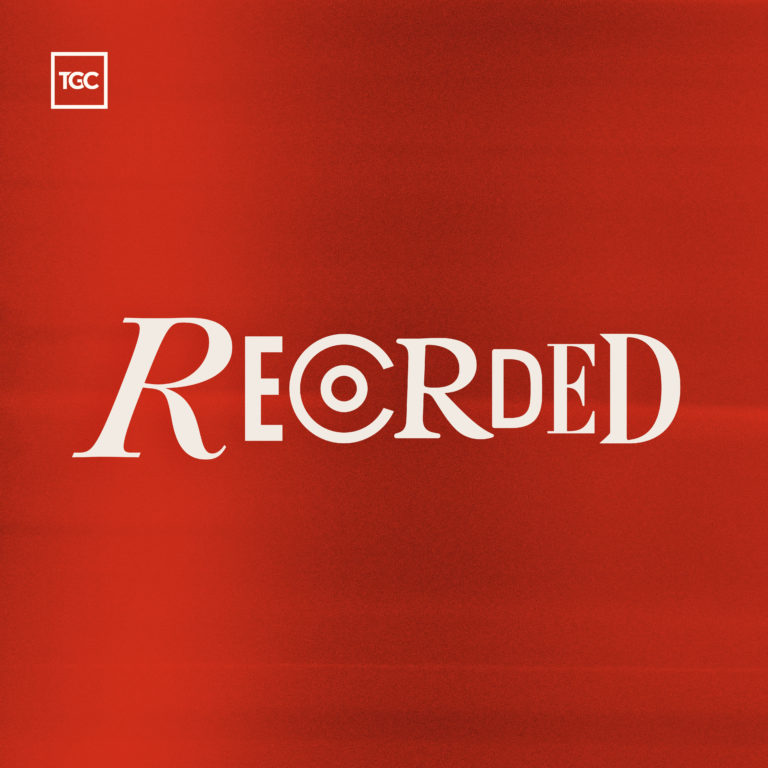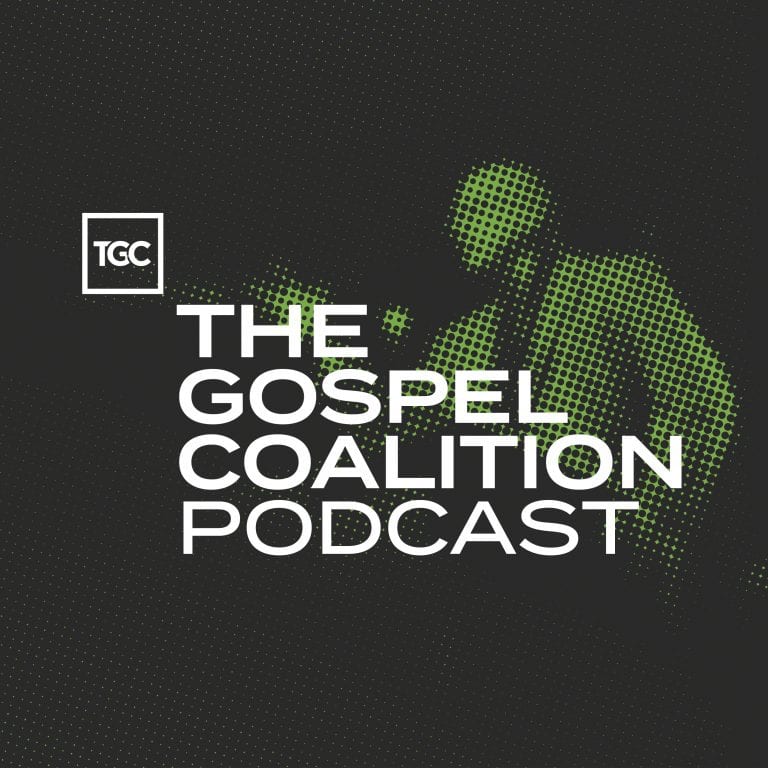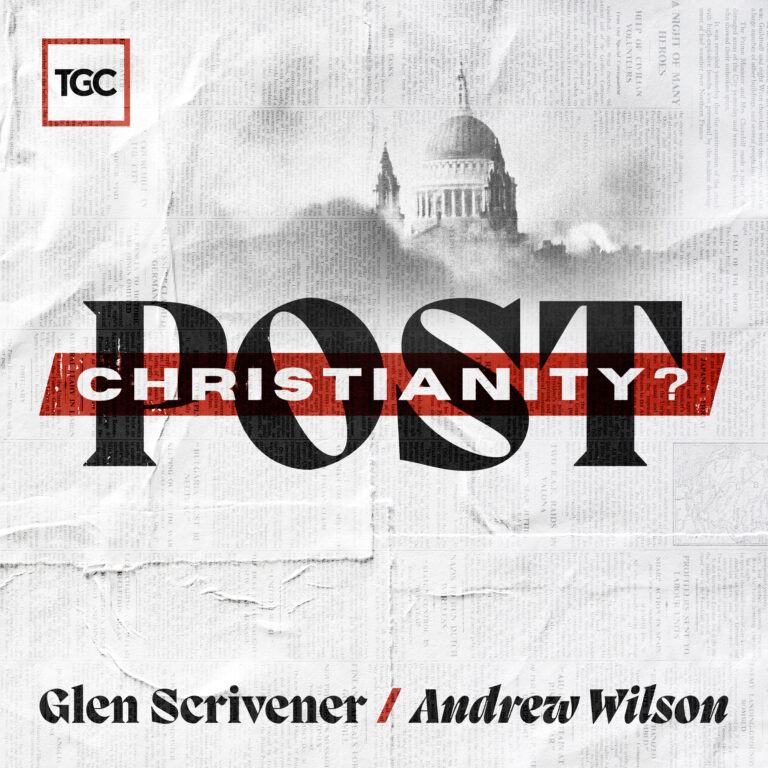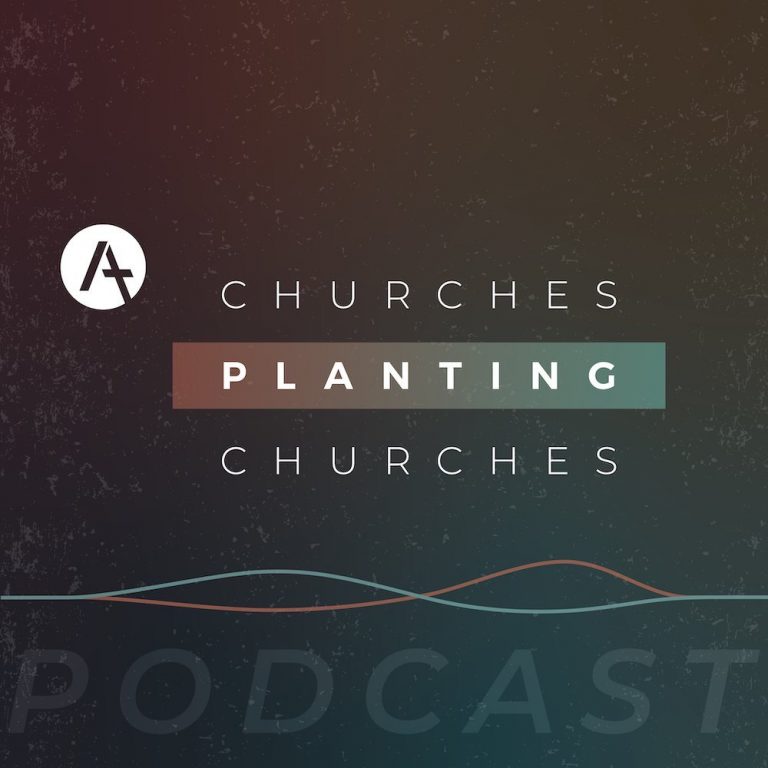Don Carson’s lecture on the timing and nature of Jesus’s second coming explores the tension between belief in an imminent return and the necessity of specific prophetic events preceding it. He critiques dispensationalist interpretations, arguing against the presence of clear signs preceding Christ’s return and emphasizing biblical coherence in eschatological understanding.
Transcript
Don Carson: I do, however, want to spend a few moments before turning to the text itself to point out some of the reasons why we have as much diversity as we do in groups that hold to the integrity and authority of the Word of God. At the risk of considerable oversimplification, there seem to be three things that are desirable in any interpretation of eschatological events.
1. Some notion of imminency
We will worry about the precise definition of that term in due course, but there is pulsating through the New Testament some kind of expectancy, some kind of anticipation of Jesus’ return. Even when there is warning of considerable delay, there is a pulsating hope that Jesus will return soon, however we define imminent there. Many people understand imminency must be taken absolutely. We’ll worry about the term itself in a moment.
2. On the face of it, it seems clearly self-evident to most of us that there is only one coming of Christ.
Not one coming in two or three steps or two comings, however it’s defined, but that Christ is coming back only once more to end this age of the inaugurated kingdom.
3. On the other hand, there also seem to be passages which speak of events taking place before Christ’s coming.
That seems, certainly, to be the thrust of 2 Thessalonians, chapter 2, where Paul is trying to cool the ardor of some of the Thessalonians who are donning their ascension robes, as it were, immediately and refusing even to work in the hope that Christ is coming so soon that, after all, there is no need to work. It might actually be a mark of infidelity if you do waste your time in secular employment.
It seems much better just to wait for the Lord’s return. Is he not coming soon? Then, Paul seems to say, “Yes, but before he returns the man of sin must appear, and the lawless one must manifest himself. Then the Lord himself will return to destroy …” There seems to be, in other words, passages that refer to future events that must take place before the Lord’s return. The problem, then, is how to line up all three of these. It’s quite easy to line up two at a time.
If, for example, you line up these two, if you hold to an absolutely imminent return that Christ could come at any second and you hold there are interpretations that are truly biblical that predict prolonged events before Christ’s coming, you really only have one option. You have to cast aside any notion that Christ is coming only once.
You really have to conclude, then, that he’s coming twice, or as most who hold to pretribulationism would say, he is coming once in two phases, which most of us would count as twice. In this view, then, the first coming is without precedent, without warning, without sign, and then various signs take place, and then the Lord returns in the second instance. But you have sacrificed something. You have sacrificed this.
Alternatively, it is also possible to line up these two. In this view, you hold that Christ could come in some narrow sense of any second, that he could come very soon, indeed, and you believe he is coming only once. In that case, if you truly believe he is coming only once and that his coming could take place at any time, you can no longer believe certain events must take place before his coming. At least not specific events.
You might suggest generalizing events but not specific events, specific individuals, or the like. In other words, it becomes logically impossible simultaneously to believe there are historically recognizable events that precede the coming of Christ and that there is only one coming of Christ and that the coming is imminent in the sense of any second. It is logically impossible.
One of the interesting things in the development of current dispensationalism, however, is this point, interestingly enough, is frequently ignored. Dispensationalists have taken this line historically in order to solve the dilemma. They no longer hold to only one coming of Christ. He comes in a secret pre-tribulation rapture. He comes at the end of the tribulation in a second part. The tribulation is all described down here. We are told, then, he is coming twice.
This means, therefore, in the first coming which is any-second imminent in this view, there are no antecedent signs. None. The trouble is, of all eschatological opinions now being offered in the marketplace, there is no system like the pretribulation system that is so adept at pointing out signs.
It’s ironical, and some of the exponents understand this. Alva J. McClain, for example, in The Greatness of the Kingdom, understands it. He refuses absolutely to see in, for example, the state of Israel any sign of the modern portents pointing to the return of Christ. Unlike most dispensationalists, he refuses absolutely.
People like Dwight Pentecost, for example, are somewhat more sophisticated, but they waffle a little. What Dwight Pentecost says is, “Yes, it’s true there are no signs that predict the imminent return of Christ, but there are adumbrations of signs.” The signs are after the imminency, but the adumbrations cast back the other side of the imminency.
Then I want to know this … Could Christ come back at any second without the adumbrations? If he could have come back without the adumbrations, then they don’t adumbrate very much. If they do adumbrate something, then he couldn’t come back until the adumbrations take place. You can’t have it both ways.
There is, of course, another option. There is a certain form of post-tribulation that is prepared to line up these two views. Here you hold there is only one coming of Christ and you hold there are predictions of events that must take place before Christ’s coming, but then you cannot believe Christ’s return is of an any-second sort. You can’t do it.
Then, of course, you can swing into various forms. You can swing into postmillennialism or certain forms of historic premillennialism or amillennialism, but you cannot believe Christ’s coming could take place at any second if you believe there are things that must take place before Christ’s coming that are still future to us and they have not yet occurred.
You can’t do it, not unless you hold that these events are of a generalized sort, that the world is wicked, there are a lot of famines here and there, and nations rising against nations, but nothing in terms of a specific outbreak of an antichrist who is identifiable as such. In part, I want to argue that is the nature of a great deal of the debate in evangelicalism. That is the heart of the problem. Many people are lining up one position or another position in this regard.
Let me sidetrack a little from the passage at hand and confess where I stand myself on this issue, although it has no necessary bearing on the exposition of Matthew 24 and 25, which in my judgment does not address that question directly. I think that question is addressed in other passages of the New Testament, but so that you will at least understand where I’m coming from, it might be worthwhile at least to get you in some of these points.
I do hold to a notion of imminency, but I am persuaded there is no biblical sanction whatsoever for seeing in imminency a notion of an any-second expectancy. Let me explain. The arguments that defend imminency in terms of any-second expectancy turn on two or three points. First, they turn on the interpretation of certain verbs, about 16 of them. I won’t go into them. I don’t have time. I will simply illustrate the point with a couple of examples.
The verb prosdechomai, for example, is used 14 times in the New Testament. Three times it is used regarding awaiting for the Lord’s return. In Luke 12:36, in Titus 2:13, and perhaps in Jude 21. In these three passages, the verb is used regarding awaiting the Lord’s return and it is argued the verb is strong enough that it means awaiting, that is, the next occurrence, awaiting it as something that could happen impendingly, but in fact, a broad study of the verb shows that does not hold up.
For example, in Acts 24:15 we are told Paul looks forward to (same verb) or expects the resurrection of the just and the unjust, which on any premillennial scheme occurs after the millennium, which means presumably we have to wait for it. In Ruth 1:13 in the Greek version, Naomi tells Ruth she is unlikely to wait for sons yet unborn in order to marry again into the family following the levirate laws. That is scarcely an any-second sort of awaiting, considering especially that Naomi is not, at this point, married.
Again, the verb ekdechomai, used eight times in the New Testament, almost always with the Lord’s return or coincident events, but in 1 Peter 3:20, for instance, the same verb is used regarding God’s waiting with longsuffering in Noah’s day, despite the fact that the prescribed interval is 120 years, which is scarcely again of an any-second variety.
In fact, in each verb, advanced to argue by those who hold to an any-second imminency is entailed by the verb, you find counterexamples. In each instance. In the first instance, therefore, I would want to argue the arguments from the meanings of verbs do not stand up. Again, I would want to argue the various passages that seek to prove this do not stand up (some of them in the Olivet Discourse we are handling as we go along).
For instance, we are sometimes told the description in verses 36 and following is of the Lord’s pretribulation rapture, but all we are told there is the return (whatever it is) occurs at a time no one knows about, not that there are no events that must precede it. The two questions are not immediately related. Moreover, there are numerous passages that presuppose either some delay in the first century or some delay that carries on.
I was recently interviewed for tenure at Trinity Divinity School. There is an imminency clause in the statement of faith down there, and it has always been the understanding in the history of the school that this extends not only to an any-second view or the like but to an any-period view, a more narrowly defined view I’ll come to in a moment.
I was pushed by someone who came from a pretribulation mold from the Free Church to define just what I meant by the Lord’s return, eagerly awaited and expected, if I held there are still to be delays. I suggested we begin with John, chapter 21. There Jesus predicts Peter, when he is old, which presupposes some passing of time, would then be taken by others and disrobed and die a martyr’s death.
Either that means Jesus could not have come during the period while Peter was still alive or it means, if he had, Jesus’ prophecy concerning Peter’s death would not have been fulfilled. When I ask my pretribulation friends which option they would go for, they smile and say, “Well, I guess we would be forced to say the prophecy must, in principle, be conditional,” but it seems to me that is not quite what the text says. The text seems as firm and absolute a prediction of Peter’s death as anything I can read in the New Testament.
Walvoord sees in Matthew 24, verse 2, a picture of the destruction of Jerusalem predicted by Jesus, but that presumably means Jesus could not have come back before AD 70, so despite Walvoord’s inconsistent interpretation that Acts 3 and 4 picture Jesus promising to come back, as it were, in the preaching of the early apostles if only the nation will repent, surely he couldn’t have come back until the temple had fallen or else he himself would have proved a false prophet.
Yet, after you go through this list, and there are many, many, many of them in the New Testament, there is another kind of predication as well that is even more dramatic. It is the prediction of things at the end. I have argued in some detail last night that chapter 24, verses 15 and following do not describe the fall of Jerusalem some second time at the end. I do not think that is the case.
I do believe, also, verses 4 to 28 argue, with the exception of verses 15 to 21, for what takes place in the entire inter-advental period. The question still remains … Is there to be an outbreak of evil at the end? I would argue there is. I do not see, myself, how fair exegesis of 2 Thessalonians 2 can come down with any other conclusion.
I would be prepared to argue that at some length, except I’m here to expound Matthew 24 and 25, and I seem to have enough on my plate at the moment. On the other hand, I give you my conclusion. It seems to me the Scriptures there presuppose that is still something to come and that is not a reference only to the fall of Jerusalem in AD 70 or the like, and if it is, then you still must come to grips with a passage like 1 John 2:18, certainly written after the fall of the temple in AD 70 where the apostle insists, “Just as you have heard that antichrist is coming, so also there now are many antichrists.”
Notice carefully what he does not say. He does not say, “You have heard antichrist is coming, but I tell you antichrist is not coming; he’s already here.” Rather, the argument is that in the light of the antichrist who is coming, just as Christ is coming, so also there are adumbrations of the antichrist in present antichrists just as Christ in his future reign is already reining now principally. There is an inaugurated eschatology of doom, of antichrist, as there is an inaugurated eschatology of Christ and his kingdom.
In other words, the presence of those who oppose Messiah during this period of Messiah’s reign is taken by the apostle to be a sign that we are in the last days, but those last days climax in the final outbreak, in fact, of this antichrist who is still to come. I dare not go on to an exposition of the Apocalypse.
In other words, there seem then to be promises in the Scripture that guarantee Christ could not come before the fall of the temple, and there seem also to be other promises in Scripture that suggest he could not return until the Antichrist manifests himself. There is warning of delay. Moreover, as we shall see tomorrow night, even the parables in 24 and 25 warn of considerable and substantial delay.
Having said all of that, there is also pulsating in the New Testament a sense that the Lord is coming back soon, and if that is what is preserved by the term imminency, as it is in some ecclesiastical divisions, I am all for the term. If we are to maintain a New Testament stance, it is extremely important we preserve amongst us an anticipation of Jesus’ return, a looking forward to the manifestation of his glory. Not a looking forward to the manifestation of his glory in the sweet by and by, but soon.
I want to suggest to you this notion of imminency is preservable if you understand it means something like, “He is coming back soon, and it could be in my lifetime.” I do not see anything of the events prescribed in Scripture that could not take place within my lifetime, nor do I see any of these events so narrowly focused that, if they start to unpack, I could then name a date.
I don’t see it, but I suggest to you that if we are to preserve the biblical balance in this area, we need to have a theology that embraces an expectancy of the Lord’s return, perhaps in my generation, perhaps in the next few years, yet at the same time understand certain things must unroll or must unpack first.
I am persuaded the first generation of Christians had that perspective entirely precisely because they could maintain the tension between their eager anticipation on the one hand and on the other hand believe when Jesus predicted Peter would die, Peter had to die. We shall come to further consideration of this question in a slightly different guise tomorrow night when we revert to the question … How are believers to await for the Lord? A question Jesus himself addresses in the four parables that constitute the last few verses of chapter 24 and all of chapter 25.
Tonight I want to direct your attention not on the birth pains, which we looked at last night, nor on the waiting, which we shall look at tomorrow night, but rather, on the return of Christ himself outlined for us in 24:29 and following. Let me read these words.
“Immediately after the distress of those days ‘the sun will be darkened, and the moon will not give its light; the stars will fall from the sky, and the heavenly bodies will be shaken.’ At that time the sign of the Son of Man will appear in the sky, and all the nations of the earth will mourn. They will see the Son of Man coming on the clouds of the sky, with power and great glory. And he will send his angels with a loud trumpet call, and they will gather his elect from the four winds, from one end of the heavens to the other.
Now learn this lesson from the fig tree: As soon as its twigs get tender and its leaves come out, you know that summer is near. Even so, when you see all these things, you know that it is near, right at the door. I tell you the truth, this generation will certainly not pass away until all these things have happened. Heaven and earth will pass away, but my words will never pass away.
No one knows about that day or hour, not even the angels in heaven, nor the Son, but only the Father. As it was in the days of Noah, so it will be at the coming of the Son of Man. For in the days before the flood, people were eating and drinking, marrying and giving in marriage, up to the day Noah entered the ark; and they knew nothing about what would happen until the flood came and took them all away. That is how it will be at the coming of the Son of Man.
Two men will be in the field; one will be taken and the other left. Two women will be grinding with a hand mill; one will be taken and the other left. Therefore keep watch, because you do not know on what day your Lord will come. But understand this: If the owner of the house had known at what time of night the thief was coming, he would have kept watch and would not have let his house be broken into. So you also must be ready, because the Son of Man will come at an hour when you do not expect him.”
So reads God’s most Holy Word.
We may divide this text into four parts.
1. This passage describes the triumph of the Lord’s coming.
Verses 29 to 31. I shall not review the interpretation of many amillennialists (not all, but many) who see this itself as a description of the fall of Jerusalem since I covered that last night. Rather, if this is a description of the Lord’s return, and in my judgment that is conclusive, we discover it is immediately after the distress of the days described in verses 4 to 28.
In other words, certain tribulation already introduced in verse 9 characterizes the entire period between Christ’s first coming and his second coming, and after the distress of those days, then the sun is darkened, the moon will not give its light, the stars will fall from the sky and the heavenly bodies will be shaken.
Here there is a winding up to the universe, as it were. The constellations seem out of order. All nature joins in in this final cataclysmic event. At that time, we are told, the sign of the Son of Man will appear in the sky. What is this sign of the Son of Man? Constantine, of course, is alleged to have seen a sign in the heavens, a cross with the words over it, “In this sign, conquer,” but no one would want to understand the cross work of Christ in those political terms.
Some have thought the sign is Jesus’ coming. When you speak of the city of Montreal, the city is Montreal. That is one possible grammatical use of the genitive. The city of Montreal may be Montreal itself, so the sign of the Son of Man, it is argued, is precisely the Son of Man’s return. There is no sign but the return of the Son of Man. But I suggest to you in this context there is a far better way of taking it steeped in Old Testament antecedent.
The word sign can mean ensign, banner, or standard. That is precisely what goes well, also, with the trumpet call in verse 31. “He will send his angels with a loud trumpet call.” Here you have a picture of the Lord’s return with a flurrying banner and the trumpets of the archangels sounding and the countless hordes of angels being sent into the far corners of the world to reap in the elect.
This ensign, in other words, is part of the signal in the description of the Lord’s triumph. Here is no longer the meek and lowly Jesus entering Jerusalem, not on the back of a war horse but on the back of a donkey. No longer any more is he the meek and lowly Jesus who goes to the cross. Here is the conquering triumphant one. Here is the one who flashes the war banner. That, of course, has ample antecedent from the Old Testament itself.
For instance, in Isaiah, chapter 11, that passage that already pictures what it will be like in the new heaven and the new earth when the Messiah does come, we read at the end of the section in verses 10 and following, “In that day the Root of Jesse will stand as a banner for the peoples; the nations will rally to him, and his place of rest will be glorious. In that day the Lord will reach out his hand a second time to reclaim the remnant that is left of his people … He will raise a banner for the nations and gather the exiles of Israel.”
Again, in the same book, chapter 18, verse 3, we read, “All you people of the world, you who live on the earth, when a banner is raised on the mountains, you will see it, and when a trumpet sounds, you will hear it. This is what the Lord says to me …” In other words, here is a picture of a final banner, a trumpet call, which gathers the people of the earth, and that is exactly what happens in this text.
Jesus returns with triumphant glory in such a way now that all of the nations themselves see it, while the angels, his emissaries, in this great horde of pomp and glory are sent to the four corners of the earth to gather the Lord’s elect. Meanwhile, all nations of the earth mourn. Despite France and Kik and others, this does not mean the tribes of the land, with reference to the fall of Jerusalem. It means the nations of the earth. They will mourn.
What kind of mourning might this be? In fact, in Scripture there are two mournings associated with the Lord’s return. There is the mourning of intense grief, repentance, and there is the mourning of utter abject, despair. The prophet Zechariah pictures certain people mourning as they look on him whom they have pierced.
In Zechariah, chapter 12, we read from verses 10 and following, “I will pour out on the house of David and the inhabitants of Jerusalem a spirit of grace and supplication. They will look on me, the one they have pierced, and they will mourn for him as one mourns for an only child, and grieve bitterly for him as one grieves for a firstborn child.”
In this context, the most immediate application of the mourning in the context of a spirit of grace and supplication seems to be that some of God’s covenantal people in the Old Testament understand the nature of the cross after the cross, too late, as it were, to stop Jesus going to the cross but understanding what they have done afterwards. They look on this Son and grieve in deep repentance because of the spirit of grace poured out upon them.
“On that day,” we read in chapter 13, “a fountain will be opened to the house of David and the inhabitants of Jerusalem, to cleanse them from sin and impurity.” But here the mourning is a little different. Here the nations are distinguished from the elect who are gathered by the angels throughout all the earth. Here the mourning must be characteristic of a different kind of mourning, best described in the Apocalypse.
It is first described in chapter 1, verse 7: “Look, he is coming with the clouds, and every eye will see him, even those who pierced him; and all the peoples of the earth will mourn because of him. So shall it be! Amen.” Again, in Revelation, chapter 6, verses 15 and following: “The kings of the earth, the princes, the generals, the rich, the mighty, and every slave and every free man hid in caves and among the rocks of the mountains. They called to the mountains and the rocks, ‘Fall on us and hide us from the face of him who sits on the throne and from the wrath of the Lamb! For the great day of their wrath has come, and who can stand?’ ”
If, then, there is an allusion to Zechariah, chapter 12 in this passage in Matthew, chapter 24, then the argument is not direct but a fortiori. That is to say, if certain people of the house of David mourned in repentance when they recognized what they had done to the one whom they pierced, how much more do the nations mourn when they see whom they have pierced when it is too late?
There is an old gospel hymn from the Kentucky folk camp days not renowned for its excellent English but quite moving, just the same.
I dreamed that the great judgment morning
Had dawned, and the trumpet had blown;
I dreamed that the nations had gathered
To judgment before the white throne;
From the throne came a bright, shining angel,
And he stood on the land and the sea,
And he swore with his hand raised to Heaven,
That time was no longer to be.
And, oh, what a weeping and wailing;
As the lost were told of their fate;
They cried for the rocks and the mountains,
They prayed, but their prayer was too late.
The rich man was there, but his money
Had melted and vanished away;
A pauper he stood in the judgment,
His debts were too heavy to pay;
The great man was there, but his greatness,
When death came, was left far behind!
The angel that opened the records,
Not a trace of his greatness could find.
And, oh, what a weeping and wailing;
As the lost were told of their fate;
They cried for the rocks and the mountains,
They prayed, but their prayer was too late.
That is the mourning that takes place here, brothers and sisters in Christ, and if we rejoice, it is because by the grace of God we do not fear to mourn so despairingly. Not ever, for when that ensign is unfurled and the trumpet blasts sound forth, the angels of God will call Christ’s elect from the four corners of the earth. Meanwhile, this same sovereign Lord mandates us with the responsibility to declare his glorious gospel to these lost men and women, to whom we ourselves must be debtors since we are no better than they.
Verse 30: “They [the nations] will see the Son of Man coming on the clouds of the sky.” Some object that, because this is clearly an allusion to Daniel, chapter 7, verses 13 and 14, where the Son of Man does not descend to the earth but simply approaches the throne of the Ancient of Days and receives a kingdom, this passage cannot refer to the Lord’s actual return. We explored that error a little last night. I want to push a little further.
It misses the point. In Daniel, chapter 7, the one like a Son of Man approaches the Ancient of Days to receive all glory, power, and authority, an everlasting dominion that will not fade away. When, then, does Jesus receive this dominion, this kingdom, in the New Testament? The answer is not a simplistic one.
There is a sense in the New Testament in which Jesus is born a king. He is a king by virtue of his birth. There is also a sense in which his public ministry is characterized by the outbreaking power of the kingdom. Do we not read in Matthew, chapter 12, verses 28 and 29, “If I by the Spirit of God cast out demons, then the kingdom of God has come upon you”?
The kingdom of God, in other words, was already inaugurated during Jesus’ ministry, but there is another sense in which Jesus enters into his kingdom, not by his birth, not by the onset of his ministry, but by his cross work, his resurrection, his ascension, his session at the right hand of the Majesty on high, for we read, according to 1 Corinthians, chapter 15, because he has triumphed in perfect obedience, therefore, God has committed all authority into his hands.
In other words, all the divine sovereignty is now mediated exclusively through the Lord Jesus Christ himself. He is, in short, the mediatorial king. He reigns, even now. All authority is his even now, but it is not an uncontested reign. It is a reign that is still frequently mediated through secondary causalities, even the Devil in his own work. It is not quite the reign in its full manifestation that will be transparent in the new heaven and the new earth when all opposition will be forever crushed and will never rise again.
There is another sense, therefore, in which Jesus enters into his reign. He approaches the Ancient of Days and receives this dominion at his return. If that is the case, as it is here, it is quite appropriate to refer to Daniel, chapter 7, verses 13 and 14, for although there is a sense in which Jesus has already begun to reign, there is another sense in which he awaits his return in order to reign. He receives, then, further authority, that is to say, of an uncontested sort, of an unmediated sort, with his return.
That is to say, the Son of Man approaches God at a certain place in heaven. We shall have no difficulty understanding the Son of Man enters into his kingdom and receives this kingdom from his Father when he comes to earth. That is precisely what is being said. He comes as the triumphant king.
A very helpful metaphor was used by Oscar Cullmann in the wake of World War II. You may have heard it, but I pass it on. It handles the paradigm of New Testament eschatology (the tension between the inaugurated kingdom and the future kingdom still to come) very nicely indeed.
When the Allied troops landed at Normandy on D-Day 1944, it was transparently obvious to anybody with half a sense of history, with half a political brain in his head, that the war was over. On the eastern front the Russians were making gains. On the western front the Allies had now superb manpower. Their production was outclassing the German production five, six, seven, eight, nine to one in every area of war materiel.
Once the beach had been established, the war was over. Of course, the war wasn’t over. There was still a lot of struggle (mopping up an outbreak of the Germans again at the Battle of the Bulge), but principally the war was over even though we had to wait until V-E Day before the armistice was signed.
That is not an entirely unpalatable analogy to what takes place in the New Testament. Our D-Day is the cross work and resurrection and ascension and exaltation of Christ. At that point, the war was over. All the battles had been won. Everything else is just mopping up and is predicated on the battle that has already been won. Our D-Day has passed, thank God, but V-E Day has not yet arrived.
Christ’s victory is still being contested. His sovereignty is still mediated through evil agencies, and you and I live in the period between D-Day and V-E Day. You and I live in the period between the first advent of Christ and the second advent of Christ, and it is a period characterized, as we saw last night, by worldwide preaching of the gospel and tremendous opposition, the worst fighting of the war, but in this passage we see Jesus triumph.
We can see by faith that Jesus triumphs now. We can understand that he has triumphed already in the cross work. Satan has already fallen from heaven. We can understand further that the One who sits in the heavens shall laugh. The Lord shall have them in derision. We can believe by faith that all things work together for good to those who love God and are the called according to his Spirit.
But his reign is still contested, and the Enemy of our souls fights with all of his wiles and deceptiveness, with all of his power, to claim men and women, to destroy human beings, to multiply evil and deceit and error and death. You and I can see with the eyes of faith that D-Day is over and the battle is won, but we are engaged in the name of the Lord in mopping up as he works in us by his power.
When he comes this time, however, there will no longer be any doubt. He will come with power and great glory. That is to say, he will universally be recognized and witnessed. His coming will be unmistakably plain. His reign is now uncontested and immediate. His place of rest will be the glory, as we read in Isaiah 11:10, literally translated.
When he comes he will be on the clouds of heaven, a constant symbol in Scripture for the presence of God often connected with eschatological blessings. In Psalm 97:2, “Clouds and thick darkness surround him; righteousness and justice are the foundation of his throne.” But sometimes this eschatological blessing is also the threat of eschatological cursing.
In Isaiah, chapter 4, we read, in verses 5 and 6, “Then the Lord will create over all of Mount Zion and over those who assemble there a cloud of smoke by day and a glow of flaming fire by night.” Clearly overtones from the exodus. “Over all the glory will be a canopy. It will be a shelter and a shade from the heat of the day, and a refuge and hiding place from the storm and rain.”
On the other hand, Ezekiel, chapter 30, verse 3. “For the day is near, the day of the Lord is near—a day of clouds, a time of doom for the nations.” Very frequently, clouds manifest the presence of the Lord and hide the presence of the Lord, but now when the Son of Man comes he comes riding on the clouds, indicating God’s presence is there in undisclosed display of power, a threat of doom to the unjust, a promise of blessing to his own elect, so we sing:
Lo! He comes with clouds descending,
Once for favored sinners slain;
Thousand thousand saints attending,
Swell the triumph of His train:
Hallelujah! Hallelujah!
God appears on earth to reign.
Every eye shall now behold Him
Robed in dreadful majesty;
Those who set at naught and sold Him,
Pierced and nailed Him to the tree,
Deeply wailing, deeply wailing,
Shall the true Messiah see.
Join The Carson Center mailing list
The Carson Center for Theological Renewal seeks to bring about spiritual renewal around the world by providing excellent theological resources for the whole church—for anyone called to teach and anyone who wants to study the Bible. The Center helps Bible study leaders and small-group facilitators teach God’s Word, so they can answer tough questions on the spot with a quick search on their smartphone.
Click the button below to sign up for updates and announcements from The Carson Center.
Join the mailing list »Don Carson (BS, McGill University; MDiv, Central Baptist Seminary, Toronto; PhD, University of Cambridge) is emeritus professor of New Testament at Trinity Evangelical Divinity School in Deerfield, Illinois, and cofounder and theologian-at-large of The Gospel Coalition. He has edited and authored numerous books. He and his wife, Joy, have two children.
































